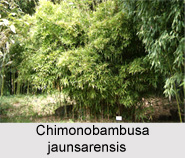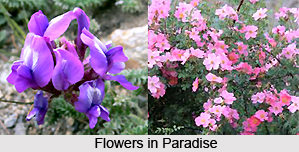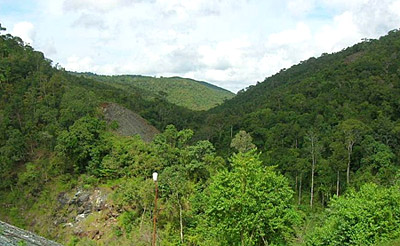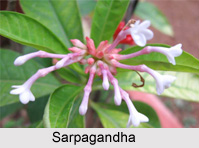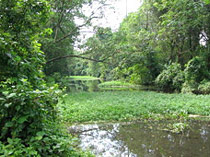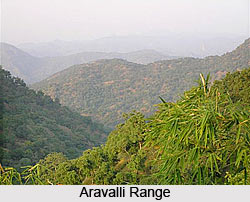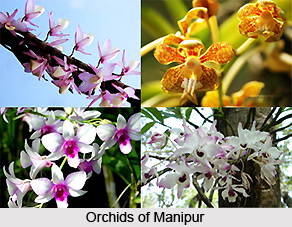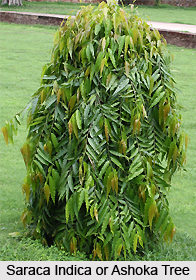 The Saraca Indica trees are also a variety of the Flame of the Forest trees. This tree is such a tree that reduces the pain and sorrow of the people. People feel happy when they see the extraordinary beauty of the tree. Saraca Indica is actually the scientific name of the tree. It belongs to the family of Leguminosae and to the sub family of Coesalpineae. The Indian people call these trees in various names. Both the Hindi and Bengali speaking people call it as Asok, Asoka, and Vanjulam. Its Asok, Ashoka or Asogam in Tamil and Diyaratmal in Sinhalese. The Malayalam people call it as either Gapis or Tengalan.
The Saraca Indica trees are also a variety of the Flame of the Forest trees. This tree is such a tree that reduces the pain and sorrow of the people. People feel happy when they see the extraordinary beauty of the tree. Saraca Indica is actually the scientific name of the tree. It belongs to the family of Leguminosae and to the sub family of Coesalpineae. The Indian people call these trees in various names. Both the Hindi and Bengali speaking people call it as Asok, Asoka, and Vanjulam. Its Asok, Ashoka or Asogam in Tamil and Diyaratmal in Sinhalese. The Malayalam people call it as either Gapis or Tengalan.
There are some doubts and controversies over the origin of the name Saraca Indica. Sir W. Jones, who has given the honour by the Indian botanists, who stated him as "the most enlightened of the sons of men", expressed his farm view that the tree should retain its old Sanskrit name Ashoka. But someone can hardly claim this as an improvement of ones like Asoka.
The origin of the tree is India, Burma and Malaysia. This is a very slow-growing, small and evergreen erect tree that has a smooth and gray brown bark. The top of the tree is well shaped and compact. Usually, one can see the flowers almost throughout the year. But from the period of February to May, the plethora of orange and cherry clusters give the tree a view of absolute beauty.
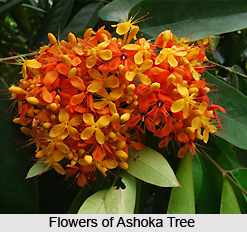 The clusters that stick very closely on to every branch and twig are consist of a lot of small flowers having long-tubes which open out into four oval lobes. They also have the appearance of Petals. They are of yellow when they are young, then they become orange and after that because of age and the effect of Sun`s rays, they get the colour of crimson. The flowers spread several long, half-white, half-crimson, stamens from a ring at the top of each tube. These give the flower clusters a hairy appearance. They also acquire a delicate perfume after the sun is set. The scimitar shaped pods are broad, stiff and leathery and their length is about 20 cm. The tree has a lot of useful medicinal properties as well. Some of the ailments of women can be cured with the juice obtained from boiling the bark. A pulp of blossoms can also be used as a remedy for dysentery.
The clusters that stick very closely on to every branch and twig are consist of a lot of small flowers having long-tubes which open out into four oval lobes. They also have the appearance of Petals. They are of yellow when they are young, then they become orange and after that because of age and the effect of Sun`s rays, they get the colour of crimson. The flowers spread several long, half-white, half-crimson, stamens from a ring at the top of each tube. These give the flower clusters a hairy appearance. They also acquire a delicate perfume after the sun is set. The scimitar shaped pods are broad, stiff and leathery and their length is about 20 cm. The tree has a lot of useful medicinal properties as well. Some of the ailments of women can be cured with the juice obtained from boiling the bark. A pulp of blossoms can also be used as a remedy for dysentery.
Like Palas, Ashoka also have some religious values. People strongly believe that the founder of Buddhist religion and the doctrine of Nirvana, Sakyamuni, was born under an Ashoka tree. All the Buddhists worship this tree. It is respected by the Hindus as well because they believe that this is the symbol of love and also dedicated directly to the God of Love, Kama Deva. Because of this religious value, the Buddhists and Hindus plant the tree round their temples. Also on `Ashok Shasthi` day, the Bengali women eat the flower buds and the Hindu women strongly believe that they will be able to protect their children if they drink the water in which the flowers have lain.
